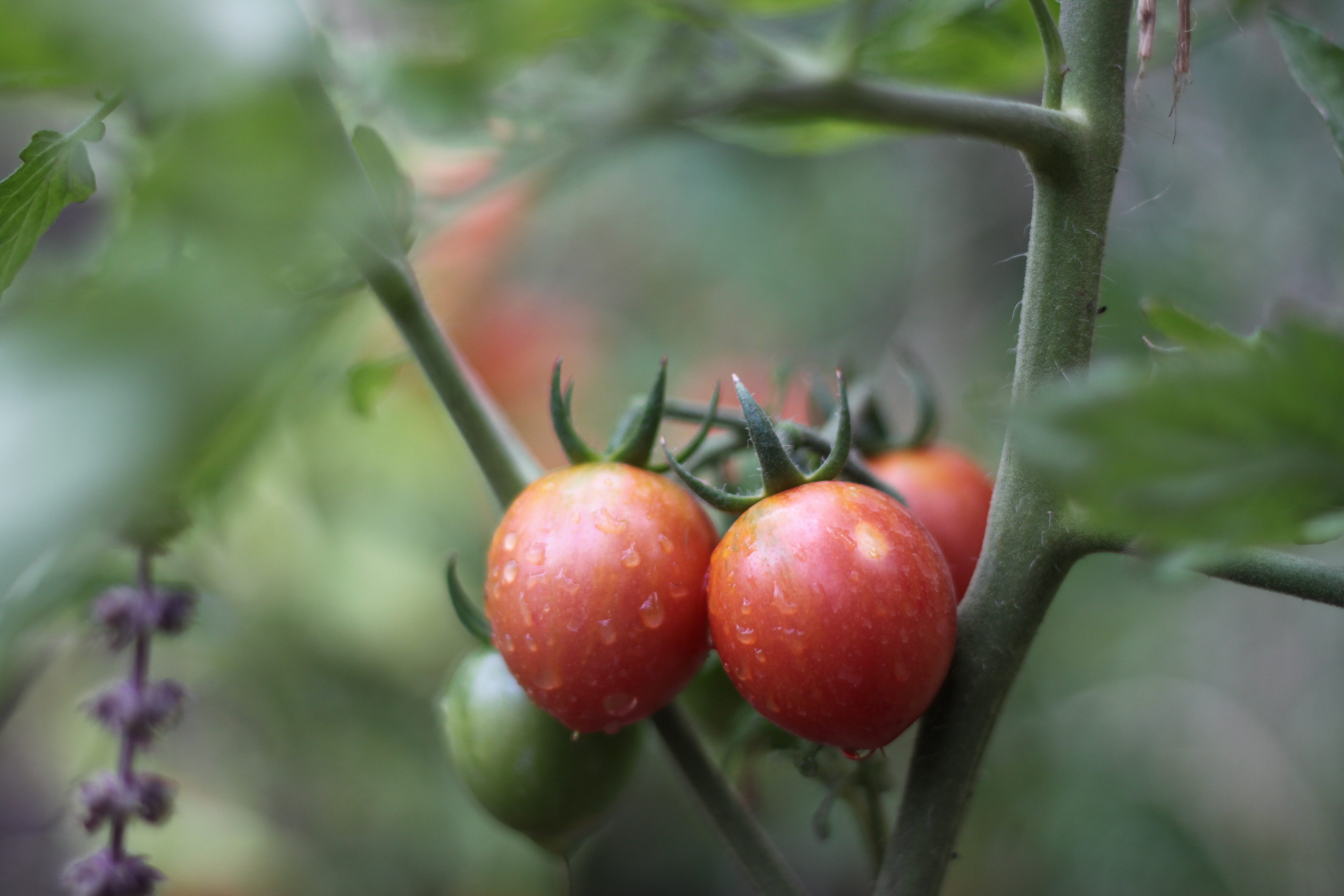Your cart is currently empty!

Since our very first trip to Idaho back in 2017 I have been absolutely hooked on hucks. I’m convinced there’s nothing that can’t be made better with huckleberries! Ice cream, milk shakes, turnovers, scones, pancakes, jams and jellies, you name it! My husband even had chicken and waffles with huckleberry syrup at a restaurant downtown.
But these little jewels are harder to come by than you’d think. Vendors on street corners and at farmer’s markets will charge you $50 a gallon for them, so it’s in your favor to make a day of it and pick them yourself! This being our third season picking gallons upon gallons of them, I’ve learned a few things from locals as well as through trial and error. It’s a wonderful family activity, and is dog-friendly too. Here are my tips for a successful day of picking, prepping and enjoying your burgundy bounty!
What’s so great about huckleberries?
I’m glad you asked! The taste reminds me of blue raspberry, sweet but with a delightful tartness. This is what makes them so wonderful for cooking with! The berry flavor is very unique and retains its essence without being drowned in added sugar like other fruits. They’re usually smaller than a blueberry, although you can get some whoppers late in the season, which is usually from June through July. They’re native to North America, and inhabit the mixed conifer forests of the Northwest, namely in Oregon, Idaho and Montana. The bushes grow best in damp, acidic soil, range in height from 2 to 4 feet, usually growing above elevations of at least 3,000ft and, in my experience, thriving around 4,000ft and above. According to Wikipedia, huckleberry was one of the few plant species to survive on the slopes of Mount St. Helens when the volcano erupted in 1980!
Efforts to commercially cultivate true huckleberry have been largely unsuccessful – “garden” huckleberry is actually a member of the nightshade family and is poisonous if eaten raw, unlike the wild variety. True huckleberries of the genus vaccinium are a shallow-rooted plant that requires very specific conditions to grow successfully, some of which I’ve noticed myself here in the mountains of Northern Idaho: they grow on forested slopes, prefer dappled shade, and like moist, well-draining soil. In my area they are particularly fond of the shade and acidity found beneath groves of red cedar at high elevations.

Where do they grow?
In northern Idaho, western Montana, and eastern Oregon and Washington: if there’s a forest service road that switches back and forth to the ideal elevation of 3,000-4,000ft, and there’s moderate tree cover, you’re likely to find huckleberries! Other berries like wild strawberries, thimbleberries, or gooseberries in an area are a good sign that there may be hucks. I haven’t seen any correlation to running water so that’s not a factor you should be concerned about when looking for a proper picking spot. Feel free to stop in a local hardware store and ask around, or even look online. Berry spots are not unlike fishing holes in that they are closely guarded secrets, sometimes handed down in families for generations, but there is more information available online every day – you just might get lucky and find record of a spot near you!
What makes for a good day of foraging?
For a productive and enjoyable day of huckleberry picking there’s a few things that have made my must-have list. Packing for a day of foraging isn’t unlike going to the beach.
Proper attire: pants and closed-toed shoes, a wide-brim hat and sunglasses are wise things to wear berry-picking, no matter the temperature outside. Berry bushes (and everything that grows nearby) are scratchy and you WILL regret wearing that cute sundress into the woods! There’s also a fair amount of bugs, and the more of your body that’s covered, the less they have to prey on. You will also want to protect your neck and ears from sunburn because at the altitude that huckleberries like to grow, you are much more vulnerable to the sun!
Sunscreen and bug spray: seems kind of obvious but I’ve forgotten them before, so I wanted to mention it here. I’ve mentioned my favorite deet-free bug spray on my backpacking post before. It’s safe to use on pets but I learned since having my son that it’s not safe for children under the age of 2 years. For Leroy, I use Johnson’s baby creamy oil, but I’ve also heard that Avon skin so soft works for babies as well.
Snacks and drinks: ideally you should spend the whole of a day in the pursuit of huckleberries, if not more. It takes a fair amount of time to gather enough for cooking with and they’re not in season for long, so the most you can make of your time, the better! I bring plenty of cold drinks, lunch and snacks to keep our energy up while foraging. While it’s great fun, it’s also hard work!
Seating: we have tripod camp stools that work great for huckleberry picking, but a camp chair or stadium seat would work too. I bring my hammock to string up in the middle of our favorite patch, and while I’d love to take a mid-day nap in the shade of the great cedars that grace the mountainside, my six-month-old reserves that luxury by default.
Picking baskets and baggies: I use this little collapsible colander for picking my berries, but a milk jug, coffee can or tupperware would work just as well; use whatever you have on hand. Just remember that if there’s a large amount of berries in your container, the weight of them will begin to crush themselves, making berries on the bottom mushy and messy. This is why I tend to use a smaller container and transfer them into quart ziploc baggies when my bowl gets full. The baggies then go into the ice chest with our drinks to keep them fresh until we go home and process them.
Self defense: unfortunately you are not the only one who enjoys a day of berry picking, and any of the large mammals that also like to partake in midday snacking aren’t anything you want to run into unarmed! So whether it’s bear spray or something a little more powerful, make sure you’re prepared to protect yourself and your family. This is another benefit of taking a dog – not only are they a built-in alarm system, just their presence alone is usually enough to deter other animals from coming into your area.
Picking Tips & Tricks
Picking hucks is worth the effort, but it’s a bit labor intensive, if not time consuming. They grow on a bush with a habit not unlike blueberries, but they are much sparser and trickier to spot: they grow mostly on the underside of the leaves. This is why I prefer to sit on the ground rather than using a chair or stool. Being a short person to begin with this affords me an advantage in that I am already looking mostly at the underside of the bushes. I’d really like to get a stadium seat just for this purpose, but for now I just sit on my feet or on a folded blanket. I’m not sure how this would work for a tall person, but my mom definitely prefers using a stool while picking. A tripod stool works really well because it’s portable and easy to move – you’ll be turning and moving between bushes quite a bit.
Many hardware stores and local shops will flaunt berry rakes and tout their usefulness in the acquisition of huckleberries, mostly to unsuspecting tourists. We’ve tried rakes and I was not thrilled with them for more than one reason, the foremost being that it doesn’t really save you any time in picking. Last year my husband and I did an experiment where I picked by hand and he used a rake, and while he was able to pick the same amount in less time, the hours I spent separating the leaves, twigs, and unripe berries out of his share was enough to negate the time saved in raking the bushes to begin with. I was much happier with the berries I picked by hand which were in better shape, weren’t full of debris, and didn’t have any unsavory berries included. The other reason I don’t like the rakes is because not only does it damage the bushes by yanking off leaves and branches, it also puts a curb on future picking in your favorite patch by grabbing berries that aren’t necessarily ready to be picked. When picking by hand, you can leave unripe and budding berries to ripen for picking at a later date, or pick ones that are on the verge of ripeness at your own discretion. Needless to say they went back to Ace Hardware after one use, and I don’t recommend them at all.
All that being said, once you have brought your bounty home and are ready to preserve them for future use, be sure to give them a good wash. You’ll want to fill a sink about half full of cold water, carefully pour your berries into it, and add a splash or two of white vinegar for cleansing. You can gently swirl the berries around to shake loose any debris that might have stowed away. Pick out any foreign objects and use a strainer or slotted spoon to scoop the berries onto a towel to dry. Once they have dried fully you can portion them into plastic zipper bags to put in the freezer, or store them in a well-ventilated container in the fridge for up to a week. You can even dehydrate them to use in your favorite baked goods.
Huckleberries are amazing in basically anything, and I highly recommend making a substitution in any of your favorite recipes that use blueberries, blackberries, or any berry really. They have a delightfully bright and complex flavor that is less acidic than other dark berries and pleasantly tart.
If you’re looking for delicious ways to use your huckleberries feel free to peruse my huckleberry recipes here. Don’t forget to save them to Pinterest for later!
4 responses to “Huckleberries: Purple Gold of the Northwest”
-
[…] If you’ve never made scones consider this a sign! They’re amazingly delicious and so simple to make. Every time I make scones I think of Mrs. McCarthy of the TV series Father Brown, for much of the show’s duration offering her famous “award-winning scones” to passerby at every opportunity. These aren’t quite as fancy but they’re remarkable nonetheless! Any berry can be substituted for the huckleberries; but if you live in the Pacific Northwest I highly encourage you to go on a huckleberrying lark! […]
-
[…] If you’d like to read my tips and tales of huckleberry picking see my post here. […]
-
[…] If you’ve never made scones consider this a sign! They’re amazingly delicious and so simple to make. Every time I make scones I think of Mrs. McCarthy of the TV series Father Brown, who for much of the show’s duration offers her famous “award-winning scones” to passerby at every opportunity. These aren’t quite as fancy but they’re remarkable nonetheless! Any berry can be substituted for the huckleberries; but if you live in the Pacific Northwest I highly encourage you to go on a huckleberrying lark! […]
-
[…] If you’d like to read my tips and tales of huckleberry picking see my post here. […]
● About Me

I’m Elizabeth, the creator and author here at The Whistling Rooster Homestead. I’m building a homestead from scratch in the mountains of North Idaho with my dear husband and our highly capable kid. I love to share our experiences here on the blog and I hope you enjoy them too. Thanks for stopping by!




Leave a Reply